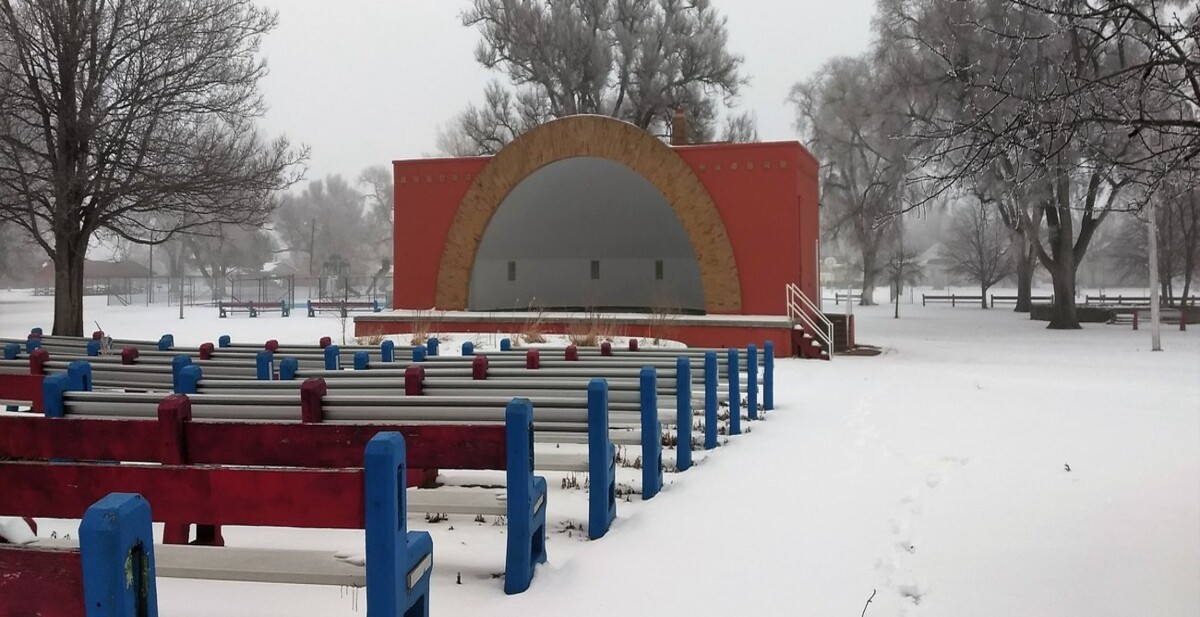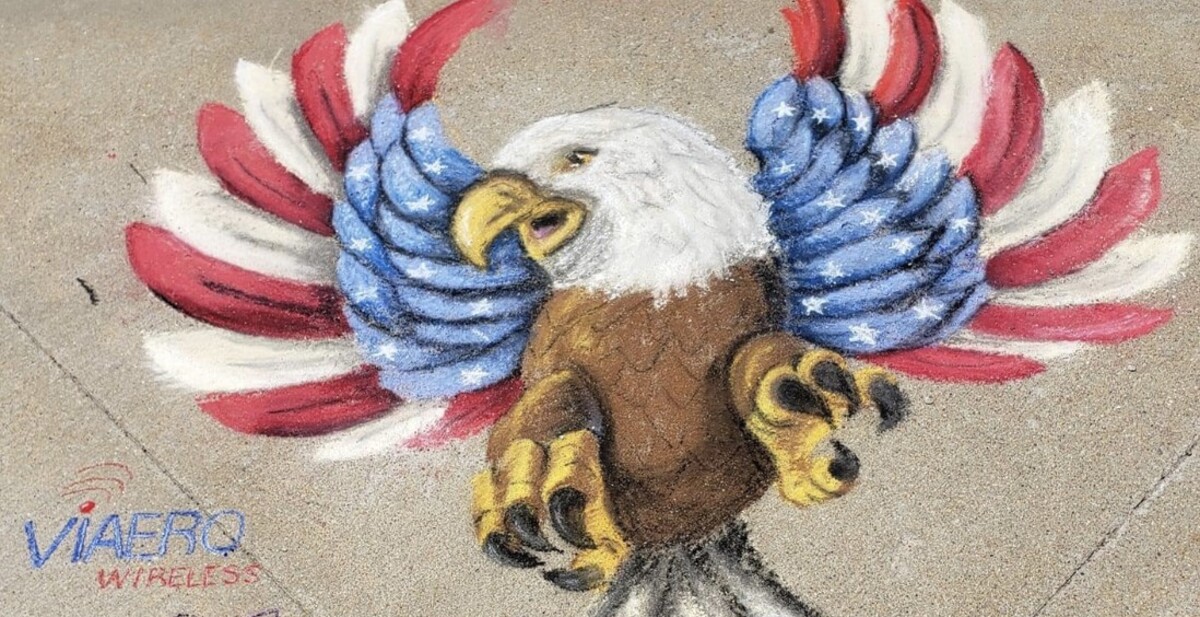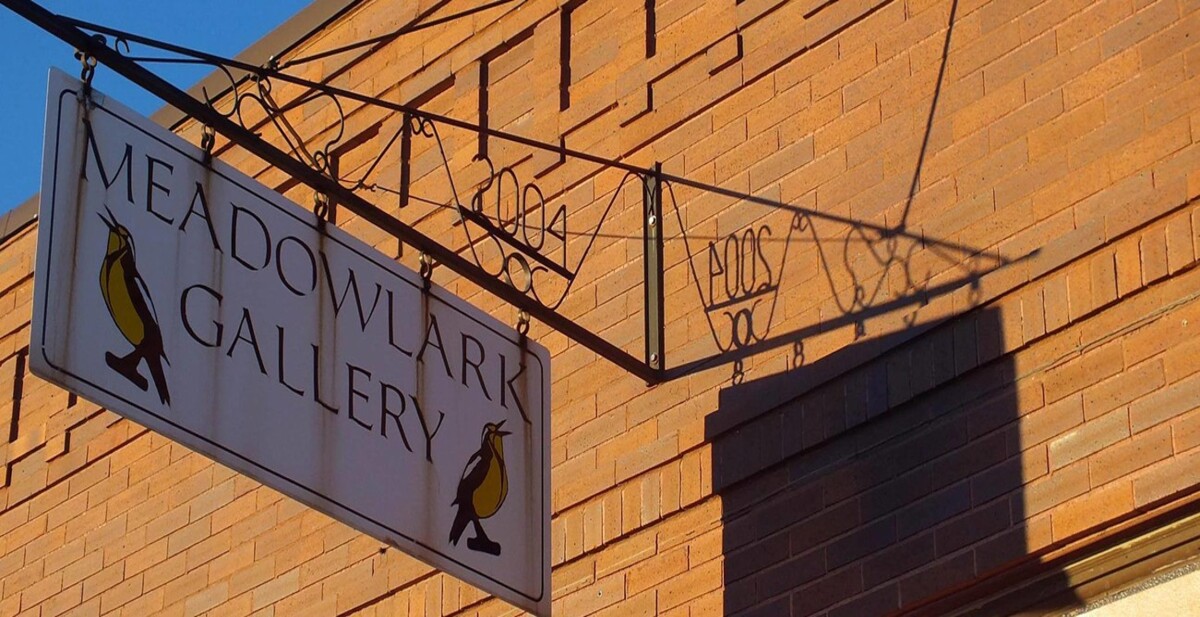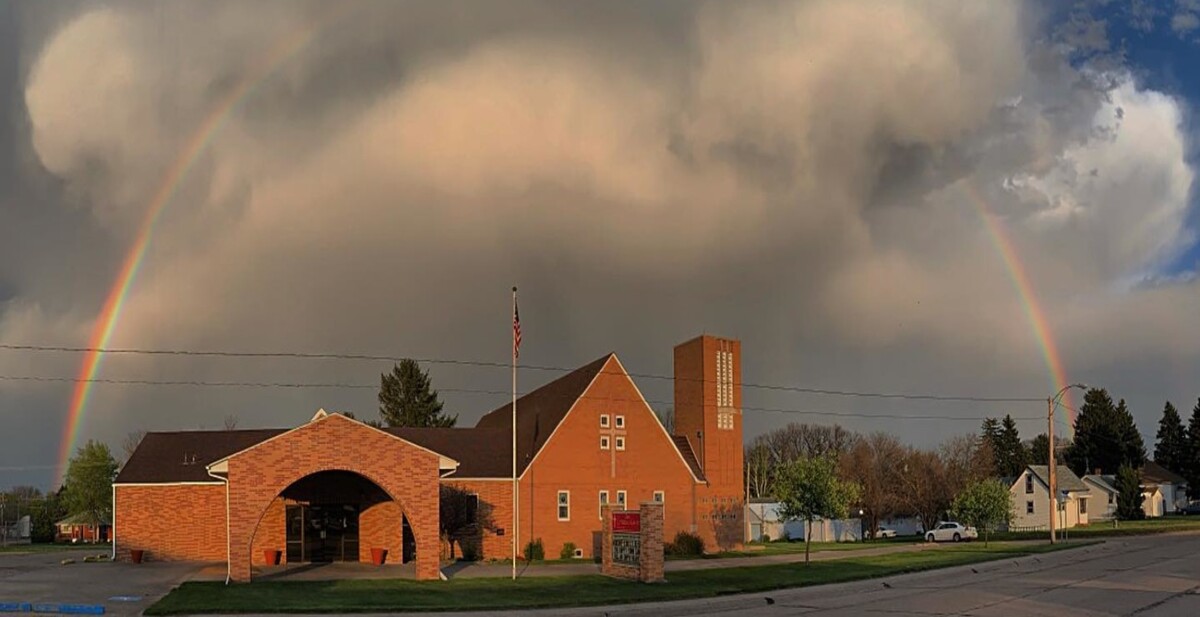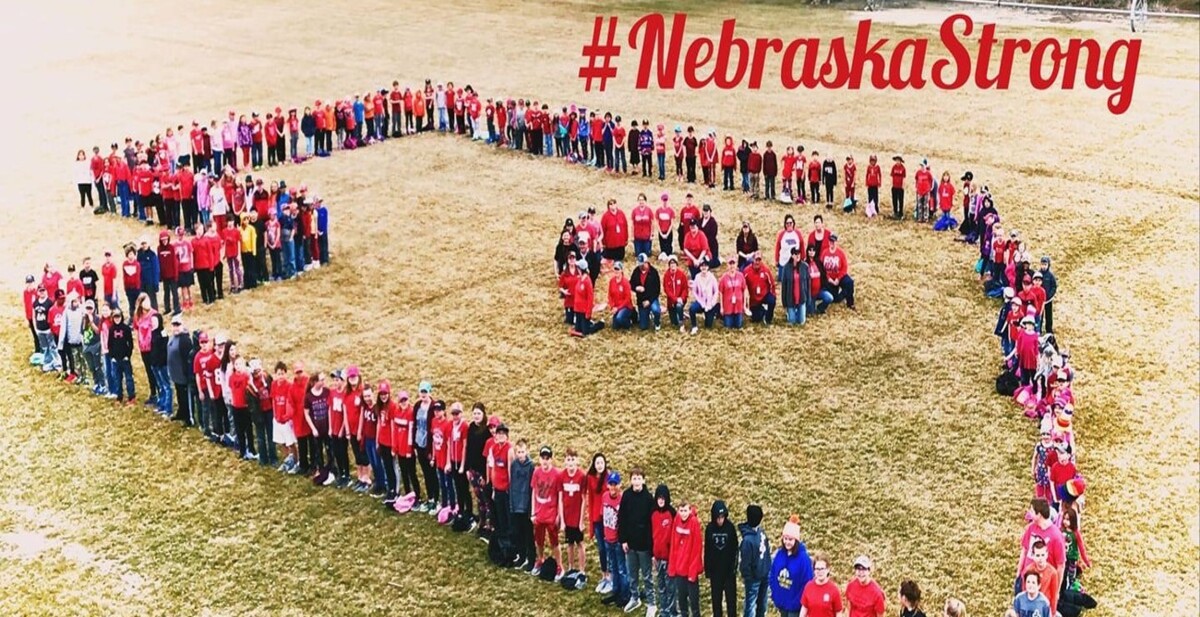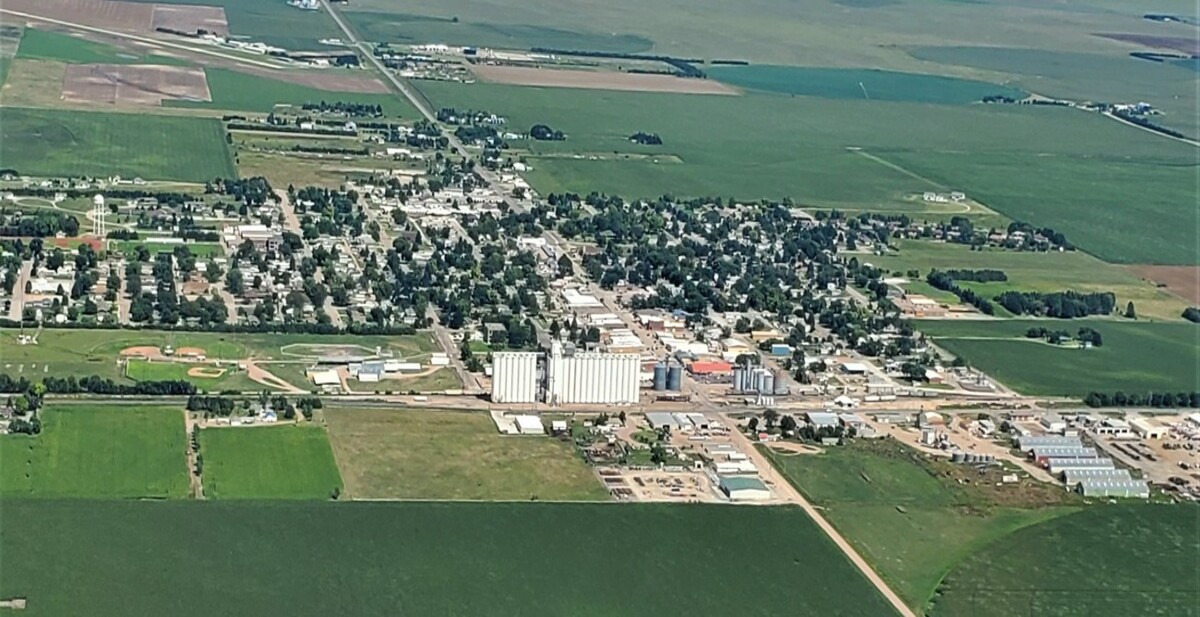Article 4 - Small Wireless Facilities Regulations
Article 4 – Small Wireless Facilities Regulations
SECTION 6-401: PURPOSE
SECTION 6-402: DEFINITIONS
SECTION 6-403: DEPLOYMENT IN THE RIGHT OF WAY
SECTION 6-404: RELIEF
SECTION 6-405: OTHER APPROVALS
SECTION 6-406: VIOLATION OF THIS ARTICLE
SECTION 6-407: LAWS, RULES AND REGULATIONS
Article 4 – Small Wireless Facilities Regulations
(Ord. No. 19-10-01, 11/27/19)
SECTION 6-401: PURPOSE
The provisions of this article shall be known as the small wireless facilities regulations for the right of way. It is the purpose of these provisions to delineate restrictions, development standards and siting criteria, and establish removal procedures in order to protect the city from the uncontrolled siting of wireless communication facilities in locations that have significant adverse effects and cause irreparable harm. The Legislature found and declared in the Small Wireless Facilities Deployment Act that:
A. The deployment of small wireless facilities and other next-generation wireless facilities is a matter of statewide concern and interest and public policy;
B. Wireless products and services are a significant and continually growing part of the state's economy and that encouraging the development of strong and robust wireless communications networks throughout the state is necessary to address public need and policy and is integral to the state's economic competitiveness;
C. Rapid deployment of small wireless facilities will serve numerous important statewide goals and public policy, including meeting growing consumer demand for wireless data, increasing competitive options for communications services available to the state's residents, improving the ability of the state's residents to communicate with other residents and with their state and local governments, and promoting public safety;
D. Small wireless facilities, including facilities commonly referred to as small cells and distributed antenna systems, are deployed most effectively in public rights of way;
E. To meet the public need and policy and the key objectives of the Small Wireless Facilities Deployment Act that wireless providers must have access to the public rights of way to densify their networks and provide next-generation wireless services;
F. Uniform procedures, rates, and fees for permit issuance and deployment of small wireless facilities in public rights of way and on authority infrastructure, including but not limited to poles, throughout the state that are reasonable and will encourage the development of robust next-generation wireless networks for the benefit of residents throughout the state; and
G. The procedures, rates, and fees in the Small Wireless Facilities Deployment Act, together with any taxes, fees, or charges imposed under Neb. Rev. Stat. §86-704;
1. Are fair and reasonable when viewed from the perspective of the state's residents and the state's interest in having robust, reliable, and technologically advanced wireless networks and;
2. Reflect a balancing of the interests of the wireless providers deploying new facilities and the interests of authorities in receiving fair value by recovering their costs of managing access to the public rights of way and provide for the attachment space on authority infrastructure and enable the reviewing and processing of applications for the installation of small wireless facilities within the rights of way.
SECTION 6-402: DEFINITIONS
A. “Act” means the Small Wireless Facilities Deployment Act (Legislative Bill 184 adopted by the Legislature and approved by the governor on May 17, 2019).
B. “Antenna” means communications equipment that transmits or receives electromagnetic radio frequency signals used in providing wireless services.
C. “Applicable codes” means uniform building, fire, safety, electrical, plumbing, or mechanical codes adopted by a recognized national code organization or local amendments to such codes so long as such amendments are not in conflict with the act and to the extent such codes have been adopted by the authority and are generally applicable in the jurisdiction.
D. “Applicant” means any person who submits an application and is a wireless provider.
E. “Application” means a written request submitted by an applicant to an authority (1) for a permit to collocate small wireless facilities on an existing utility pole or wireless support structure or (2) for a permit for approval for the installation, modification, or replacement of a utility pole to support the installation of a small wireless facility.
F. “Authority” means the State of Nebraska or any agency, county, city, village, or other political subdivision thereof, except as otherwise excluded herein. Authority does not include public power suppliers, state courts having jurisdiction over an authority, or an entity that does not have zoning or permit-granting authority.
G. “Authority pole” means a utility pole owned, managed, or operated by or on behalf of an authority.
H. “City” means the City of Grant, Nebraska.
I. “City Council” means the group of elected officials which is able to make decisions on behalf of the city.
J. “Collocate” or “collocation” means to install, mount, maintain, modify, operate, or replace small wireless facilities on or adjacent to a wireless support structure or utility pole. Collocate or collocation does not include the installation of a new utility pole or new wireless support structure in the right of way.
K. “Communications facility” means the set of equipment and network components including wires, cables, and associated facilities used by a cable operator as defined in 47 U.S.C. 522(5), as such section existed on January 1, 2019, a telecommunications carrier as defined in 47 U.S.C. 153(51), as such section existed on January 1, 2019, a provider of information service as defined in 47 U.S.C. 153(24), as such section existed on January 1, 2019, or a wireless services provider, to provide communications services, including cable service as defined in 47 U.S.C. 153(8), as such section existed on January 1, 2019, an information service as defined in 47 U.S.C. 153(24), as such section existed on January 1, 2019, wireless services, or other one-way or two-way communications service.
L. “Communications network” means a network used to provide communications service.
M. “Communications service” means a cable service as defined in 47 U.S.C. 522, as such section existed on January 1, 2019, an information service as defined in 47 U.S.C. 153, as such section existed on January 1, 2019, a telecommunications service as defined in 47 U.S.C. 153, as such section existed on January 1, 2019, or a wireless service.
N. “Communications service provider” means a cable operator as defined in 47 U.S.C. 522, a provider of information service as defined in 47 U.S.C. 153, or a telecommunications carrier as defined in 47 U.S.C. 153, as such sections existed on January 1, 2019. Communications service provider includes a wireless provider.
O. “Decorative pole” means an authority pole that is specially designed and placed for aesthetic purposes.
P. “Distributed antenna system” means a network consisting of transceiver equipment at a central hub site to support multiple antenna locations throughout the desired coverage area.
Q. “Eligible facilities request” shall be as defined in federal regulations.
R. “FAA” means the Federal Aviation Administration.
S. “FCC” means the Federal Communications Commission.
T. “Fee” means a one-time, nonrecurring charge.
U. “Historic district” means any prehistoric or historic district, site, building, structure, or object included in, or eligible for inclusion in, the National Register of Historic Places, in accordance with Stipulation VI.D.1.a (i)-(v) of the Nationwide Programmatic Agreement for Review of Effects on Historic Properties for Certain Undertakings Approved by the Federal Communications Commission codified at 47 C.F.R. part 1, Appendix C, as such regulation existed on January 1, 2019, or designated pursuant to state historic preservation law if such designation exists at the time of application.
V. “Law” means federal, state, or local law, statute, common law, code, rule, regulation, order, or ordinance.
W. “Macro cell” means an antenna or antennas mounted on a tower, ground-based mast, rooftops or structures, at a height that provides coverage to the surrounding area.
X. “Micro wireless facility” means a small wireless facility that is not larger in dimension than 24 inches in length, 15 inches in width, and 12 inches in height and with any exterior antenna no longer than eleven inches.
Y. “Permit” means a written authorization required by an authority to perform an action, initiate, continue, or complete installation of a small wireless facility on an existing utility pole or attached to an existing wireless support structure, or to install, modify, or replace a utility pole to support installation of a small wireless facility.
Z. “Person” means an individual, a corporation, a limited liability company, a partnership, an association, a trust, or any other entity or organization, including but not limited to an authority.
AA. “Pole” means a legally constructed pole, such as a utility, lighting or similar pole made of wood, concrete, metal or other material, located or to be located within the right of way.
BB. “Public power supplier” means a public power district or any other governmental entity providing electric service. Public power supplier shall include a municipal electric utility or a rural public power supplier.
CC. “Rate” means a recurring charge.
DD. “Right of way” means the area on, below, or above a public roadway, highway, street, sidewalk, alley, dedicated utility easement, or similar property but not including a freeway as defined in Neb. Rev. Stat. §39-1302, the National System of Interstate and Defense Highways, or a private easement.
EE. “Routine maintenance” means inspections, testing or repair that maintain functional capacity, aesthetic and structural integrity of a small wireless facility and the associated structure, pole or tower, and that does not involve impeding, damaging or disturbing any portion of the right of way.
FF. “Rural public power supplier” means a public power district, a public power and irrigation district, an electric cooperative, or an electric membership association, that does not provide electric service to any city of the metropolitan class, city of the primary class, or city of the first class.
GG. “Small wireless facility” means a wireless facility that meets each of the following conditions:
1. The facilities (a) are mounted on structures 50 feet or less in height including the antennas; or (b) are mounted on structures no more than 10% taller than other adjacent structures.
2. Each antenna associated with the deployment is no more than 3 cubic feet in volume;
3. All other equipment associated with the structure, whether ground-mounted or pole-mounted, is no more than 28 cubic feet in volume;
4. The facilities do not require antenna structure registration under 47 C.F.R. part 17, as such regulation existed on January 1, 2019;
5. The facilities are not located on tribal lands, as defined in 36 C.F.R. 800.16(x), as such regulation existed on January 1, 2019; and
6. The facilities do not result in human exposure to radio frequency radiation in excess of the applicable safety standards specified in 47 C.F.R. 1.1307(b), as such regulation existed on January 1, 2019.
HH. “State” means the State of Nebraska.
II. “Stealth” means a design that minimizes the visual impact of wireless communication facilities by camouflaging, disguising, screening, or blending it into the surrounding environment. Examples of stealth design include but are not limited to facilities disguised as trees (monopines), flagpoles, utility and light poles, bell towers, clock towers, ball field lights and architecturally screened roof-mounted antennas or flush mounted antennas that are either painted to match or enclosed in an architecturally applicable box.
JJ. “Substantial change” is defined by federal regulations.
KK. “Technically feasible” means that by virtue of engineering or spectrum usage, the proposed placement for a small wireless facility, or its design or site location, can be implemented without a reduction in the functionality of the small wireless facility.
LL. “Tower” means any structure in the right of way built for the sole or primary purpose of supporting a wireless communication facility.
MM. “Tower height” means the vertical distance measured from the base of the tower structure at grade to the highest point of the structure including the antenna. A lightning rod, not to exceed 10 feet in height, shall not be included within tower height.
NN. “Transmission equipment” means equipment that facilitates transmission for any FCC-licensed or authorized wireless communication service, including, but not limited to, radio transceivers, antennas, microwave dishes, coaxial or fiber-optic cable and backup power supplies. The term includes equipment associated with wireless communication services including, but not limited to, private, broadcast, and public safety services, as well as unlicensed wireless services and fixed wireless services such as microwave backhaul.
OO. “Utility pole” means a pole located in the right of way that is used for wireline communications, lighting, the vertical portion of support structures for traffic control signals or devices of a similar function, or for the collocation of small wireless facilities and located in the right of way. Utility pole does not include:
1. Wireless support structures;
2. Any transmission infrastructure owned or operated by a public power supplier or rural public power supplier; or
3. Any distribution or communications infrastructure owned or operated by a rural public power supplier.
PP. “Wireless facility” means equipment at a fixed location that enables wireless communications between user equipment and a communications network, including:
1. Equipment associated with wireless communications; and
2. Radio transceivers, antennas, coaxial or fiber-optic cable, regular power supply, and small back-up battery, regardless of technological configuration.
Wireless facility includes small wireless facilities. Wireless facility does not include:
1. The structure or improvements on, under, or within the equipment which is collocated;
2. Coaxial or fiber-optic cable that is between wireless structures or utility poles or that is otherwise not immediately adjacent to, or directly associated with, a particular antenna; or
3. A wireline backhaul facility.
QQ. “Wireless infrastructure provider” means any person, including a person authorized to provide telecommunications service in the state, when acting to build or install wireless communication transmission equipment, wireless facilities, or wireless support structures but is not a wireless services provider.
RR. “Wireless provider” or “provider” means a wireless services provider or a wireless infrastructure provider when acting as a co-applicant for a wireless services provider.
SS. “Wireless services” means any services using licensed or unlicensed spectrum, including the use of wi-fi, whether mobile or at a fixed location, provided to the public using wireless facilities.
TT. “Wireless services provider” means a person who provides wireless services.
UU. “Wireless support structure” means a structure such as a guyed or self-supporting tower, billboard, building, or other existing or proposed structure designed to support or capable of supporting wireless facilities other than a structure designed solely for the collocation of small wireless facilities. Wireless support structure does not include a utility pole.
VV. “Wireline backhaul facility” means an above-ground or underground facility used to transport communications services from a wireless facility to a communications network.
SECTION 6-403: DEPLOYMENT IN THE RIGHT OF WAY
A. Applicability.
1. Public Power Supplier Poles. A public power supplier shall not be required to allow the collocation of small wireless facilities on utility poles owned, operated, or managed by a public power supplier except pursuant to a negotiated pole attachment agreement containing reasonable and nondiscriminatory terms and conditions, including but not limited to applicable rates, and the permit, operational, and safety requirements of the public power supplier. The city is a public power supplier.
2. Annual Rate for Collocation on Public Power Supplier Poles. The annual pole attachment rate for the collocation of a small wireless facility supported by or installed on a utility pole owned, operated, or managed by a public power supplier shall be fair, reasonable, nondiscriminatory, cost-based, and set by the board of such public power supplier in accordance with Neb. Rev. Stat. §70-655.
3. Placement. This article only applies to the deployment of small wireless facilities in the right of way with the exception that the application fees provided in the FCC’s Declaratory Ruling and Third Report and Order released September 27, 2018, apply to small wireless facilities in and outside of the right of way.
B. Agreement for use of the right of way.
1. Agreement. Prior to installing any small wireless facility in the right of way or any pole built for the sole or primary purpose of supporting a small wireless facility or any tower, a person shall enter into an agreement with the city expressly authorizing use of the right of way for the small wireless facility, pole or tower proposed to be installed. The agreement shall provide for the attachment to municipal poles or structures in the right of way in addition to poles or structures owned by unrelated third parties, provided that the applicant secures the written consent of the third party for such attachment.
2. General Terms.
a. The term of an agreement shall be for up to five years. The agreement may be renewed for an additional term of three years subject to the mutual written agreement of the city and provider.
b. The agreement authorizes the provider’s non-exclusive use of the right of way for the sole purpose of installing, maintaining and operating wireless communication facilities, including any pole built for the sole or primary purpose of supporting the wireless communication facilities and any tower, to provide the services expressly authorized in the agreement, subject to applicable laws, this article and the terms and conditions of the agreement. The agreement authorizes use only of the right of way in which the city has an actual interest. It is not a warranty of title or interest in any right of way and it does not confer on the provider any interest in any particular location or to a superior or preferred location within the right of way. Nothing herein shall authorize the use of the city’s poles, towers, support structures or other structures outside of the right of way. All use of municipal poles, towers, support structures, and other structures in the right of way shall require a separate attachment agreement or be specifically provided for in the agreement and shall include the payment of fees for such use.
c. The provider shall, at its sole cost and expense, keep and maintain its wireless communication facilities, poles, support structures and towers in the right of way in safe working condition and in good order and repair.
d. In the event of an emergency regarding the provider’s small wireless facilities, related poles, support structures or towers, the provider shall immediately notify the city of the nature of the emergency and planned response to the emergency.
3. Permit Required. No person may construct, install or maintain in the right of way any wireless facilities without first receiving a permit from the city. Notwithstanding the foregoing, in the event of an emergency, a wireless provider or its duly authorized representative may work in the right of way prior to obtaining a permit, provided that the provider shall contact the city prior to commencing the work and shall apply for a permit as soon as reasonably possible but not later than 24 hours after commencing the emergency work. For purposes of this subsection, an “emergency” means a circumstance in which immediate repair to damaged or malfunctioning facilities is necessary to restore lost service or prevent immediate harm to persons or property.
4. Permit Application Requirements. The application shall be submitted by the wireless provider or its duly authorized representative and shall contain the following:
a. The applicant’s name, address, telephone number, and email address, including emergency contact information for the applicant.
b. The names, addresses, telephone numbers, and email addresses of all consultants, if any, acting on behalf of the applicant or provider with respect to the filing of the application.
c. A description of the proposed work and wireless communication facility sufficient to demonstrate compliance with the provisions of this article.
d. If applicable, a copy of the authorization from the owner of the pole, tower or support structure on or in which the wireless communication facility will be placed or attached.
e. Detailed construction drawings and photo simulations regarding the proposed wireless communication facility. To the extent the proposed wireless communication facility involves collocation on a pole, tower or support structure, a structural report prepared by a Nebraska licensed professional engineer evidencing that the pole, tower or support structure will support the collocation (or that the pole, tower or support structure will be modified to meet structural requirements) in accordance with applicable codes.
f. For any new above-ground wireless communication facilities, accurate visual depictions or representations, if not included in the construction drawings or photo simulations.
g. Any other submission requirements per published municipal policies or regulations. All applications for small wireless facility installations in the right of way shall be made to the city superintendent.
5. Proprietary or Confidential Information in Application. Applications are public records that may be made publicly available pursuant to the Nebraska public records law. Notwithstanding the foregoing, the applicant may designate portions of its application materials that it reasonably believes contain proprietary or confidential information as “proprietary” or “confidential” by clearly marking each portion of such materials accordingly, and the city shall treat the information as proprietary and confidential, subject to the Nebraska public records law and the city’s determination that the applicant’s request for confidential or proprietary treatment of application materials is reasonable and in compliance with such law. The city shall not be required to incur any costs to protect the application materials from disclosure, other than the city’s routine procedures for complying with the Nebraska public records law.
6. Routine Maintenance and Repair. A permit shall not be required for routine maintenance and repair. The provider or other person performing the routine maintenance and repair shall obtain any other permits required by applicable laws and shall notify the city in writing at least 48 hours before performing the routine maintenance and repair.
7. Application Fees and Bonds. All applications pursuant to this article shall be accompanied by the requisite fees required by the city. Unless otherwise provided in an agreement or agreed to in writing by the city, a performance or construction bond or other form of surety acceptable to the city equal to at least 100% of the estimated cost of the work within the right of way shall be provided before the applicant commences work.
8. Effect of Permit. A permit from the city authorizes an applicant to undertake only the activities in the right of way specified in the application and permit, and in accordance with this article and any conditions included in the permit. A permit does not authorize attachment to or use of existing poles, towers, support structures or other structures in the right of way. A permittee or wireless provider must obtain all necessary approvals from the owner of any pole, tower, support structure or other structure prior to any attachment or use. A permit does not create a property right for the applicant. The applicant shall not interfere with other uses or users of the right of way.
9. Duration. Any permit for construction issued under this article shall be valid for a period of one year, provided that the one-year period may be extended for up to an additional one year upon approval by the City Council or its designee upon the written request of the applicant (made prior to the end of the initial one-year period) if the failure to complete construction is as a result of circumstances beyond the reasonable control of the applicant.
10. Multiple Sites. An applicant may submit no more than ten sites in a consolidated application for small wireless facilities, provided that the proposed wireless communication facilities are to be deployed on the same type of structure using similar equipment within the city.
C. Administrative review.
1. Approval Process. Small wireless facilities in the right of way may be approved through administrative review if the following requirements are met:
a. A complete application is submitted, all fees are paid and a permit is obtained by the applicant or provider; and
b. Each new, modified or replacement pole, tower or structure installed in the right of way shall not exceed the height limits of the respective zoning district. If a height limit is exceeded, then either a conditional use permit or special use permit is required; and
c. The applicant complies with all of the other requirements of this article.
2. Design Standards. Subject to subsection C(1)(b) above, all poles and small wireless facilities may be approved through administrative review if the following design standards and recommended design guidelines (if adopted) are met by the applicant:
a. Height, shape, design and color for poles and related equipment.
b. Number, location and styles of poles that may be installed or used.
c. Aesthetic approach for different types of poles and related equipment.
d. Construction approach per wireless communication facility, including powering and metering.
e. Structural integrity.
f. Setbacks for poles and ground-mounted equipment.
g. Ground-mounted equipment for small wireless facilities may be used only to house equipment in support of the operation of the facilities.
h. Lighting, marking and noise requirements.
i. Fencing/landscaping/screening/signage requirements.
j. Collocation analysis.
k. Use of decorative poles, where necessary.
l. A written report will be prepared, signed and sealed by a Nebraska licensed professional engineer or a qualified employee of the applicant, which assesses whether the proposed small wireless facility demonstrates compliance with the radio frequency (“RF”) emissions limits established by the FCC. The qualified employee of the applicant shall submit his or her qualifications with the report.
3. Additional Guidelines. The City Council may approve by resolution additional recommended design guidelines. Further changes to those recommended design guidelines are subject to the discretion of the city.
D. Right of way construction and installation requirements.
1. Lighting. Towers may not be artificially lighted, unless required by public safety, the FAA or applicable municipal regulation.
2. State or Federal Requirements. All towers and antennas must meet current standards and regulations of the FAA, FCC and any other agency of the local, state or federal government with authority to regulate towers and antennas.
3. Building Codes. To ensure the structural integrity of poles and towers, the owner of a pole or tower shall ensure that the pole or tower is maintained in compliance with industry standards and applicable state and local building code standards.
4. Public Notice. For purposes of this article, any application for a small wireless facility or pole, variance, exception or appeal of a request for a permit requires public notice to all adjoining property owners and all owners of surrounding properties as may be required by the city.
5. Equipment Cabinets. The equipment cabinets shall comply with all applicable building codes and zoning requirements.
6. Site Plan. A site plan is required. A scaled site plan shall clearly indicate the location, type, height and width of the proposed pole, on-site land uses and zoning, adjacent land uses and zoning, adjacent roadways, photo simulations, a depiction of all proposed transmission equipment, proposed means of access, setbacks from property lines, elevation drawings or renderings of the proposed pole and any other structures, topography, utility
runs and other information deemed necessary to assess compliance with this article.
7. Inventory of Existing Sites. Not more than one time per year, each applicant owning a macro cell tower shall provide to the city an inventory of the wireless provider’s existing towers, antennas, or sites approved for towers or antennas, that are either within the jurisdiction of the city or within 1 mile of the border thereof, including specific information about the location and tower height. The city may share such information with other applicants applying for administrative review or other permits under this article or other organizations seeking to locate antennas within the jurisdiction of the city, provided, however, that the city is not, by sharing such information, in any way representing or warranting that such sites are available or suitable.
8. Color. To the extent feasible, the antennas shall be placed and colored to blend into the architectural detail and coloring of the host structure. Towers and antennas shall be painted a color that best allows them to blend into the surroundings. The use of grays, blues, greens, dark bronzes, browns or other site-specific colors may be appropriate; however, each case shall be evaluated individually.
9. Signs. No facilities may bear any signage other than that required by law or expressly permitted or required by the city.
10. Visual Impact. All small wireless facilities in residential districts, historic and downtown districts shall be sited and designed with stealth features to minimize adverse visual impacts on surrounding properties and the traveling public to the greatest extent reasonably possible, consistent with the proper functioning of the wireless communication facilities. Such wireless communication facilities and equipment enclosures shall be integrated through location and design to blend in with the existing characteristics of the site. Stealth and concealment techniques must be appropriate given the proposed location, design, visual environment, and nearby uses, structures, and natural features. Such wireless communication facilities shall also be designed to either resemble the surrounding landscape and other natural features where located in proximity to natural surroundings or be compatible with the built environment or be consistent with other uses and improvements permitted in the relevant zone.
11. Obstruction. Any new pole or support structure or equipment associated with small wireless facilities shall not obstruct access to:
a. Any existing above-ground or underground right of way user facilities or public facilities;
b. Any public infrastructure for traffic control, street light or public transportation purposes including, without limitation, any vehicular traffic sign or signal or pedestrian traffic sign or signal;
c. Any public transportation street furniture or other improvements at any public transportation stop;
d. Fire hydrants; or
e. Any doors, gates or other ingress and egress points to any building appurtenant to the right of way.
12. Placement and Notice. All pole-mounted transmission equipment shall be mounted as close as technically possible to the pole so as to reduce the overall visual profile to the extent feasible subject to applicable safety codes. Prior to the installation or construction of a small wireless facility within the right of way or utility easement, the wireless provider must notify all utilities located within such right of way or utility easement regarding its proposed use of the right of way or utility easement.
13. Accessory Equipment. All accessory equipment located at the base of a pole or tower shall be placed (at the provider’s choice) underground, or in an equipment cabinet that is:
a. Designed to blend in with existing surroundings, using architecturally compatible construction and colors; and
b. Be located so as to be unobtrusive as possible consistent with the proper functioning of the wireless communication facilities.
14. Site Design Flexibility. Individual sites vary in the location of adjacent buildings, existing trees, topography and other local variables. By mandating certain design standards, there may result a project that could have been less intrusive if the location of the various elements of the project could have been placed in more appropriate locations within a given site. Therefore, the wireless communication facilities and supporting equipment may be installed so as to best camouflage, disguise or conceal them, to make the wireless communication facilities more closely compatible with and blend into the setting or host structure, upon approval by the city.
15. New Poles. To the extent technically feasible, new poles must be designed to match the existing light fixtures and other poles, and they shall serve a dual purpose (for example, a new light fixture, flagpole or banner clips).
16. Maps and As-Builts. The wireless provider shall furnish to the city paper and electronic maps showing the location of its equipment in the right of way and as-builts after construction is completed.
E. Attachment to and replacement of decorative poles.
1. Notwithstanding anything to the contrary in this article, an applicant may not install a small wireless facility on a decorative pole or replace a decorative pole with a new decorative pole unless the city has determined, in its sole discretion, that each of the following conditions has been met:
a. The application qualifies for issuance of a permit; and
b. The attachments and replacement pole are in keeping with the aesthetics of the decorative pole.
2. An applicant may not install a small wireless facility on a decorative pole, replace a decorative pole with a new decorative pole, or install new above-ground facilities in the Historic District unless the city has determined, in its sole discretion, that each of the following conditions has also been met:
a. The application qualifies for issuance of a permit; and
b. The attachment and replacement pole are in keeping with the aesthetics and character of the decorative pole and Historic District.
F. General work requirements.
1. General Safety and Compliance with Laws. The permitee shall employ due care during the installation, maintenance or any other work in the right of way and shall comply with all safety and construction requirements of applicable laws, municipal guidelines, standards and practices and any additional commonly accepted safety standards.
2. Traffic Control. Unless otherwise specified in the permit, the permitee shall erect a barrier around the perimeter of any excavation and provide appropriate traffic control devices, signs and lights to protect, warn, and guide the public (vehicular and pedestrian) through the work zone. The manner and use of these devices shall be as described within a traffic control plan. The permitee shall maintain all barriers and other traffic control and safety devices related to an open excavation until the excavation is restored to a safe condition or as otherwise directed by the city.
3. Non-Interference. The permitee shall not interfere with any existing facilities or structures in the right of way, and shall locate its lines and equipment in such a manner as not to interfere with the usual traffic patterns (vehicular or pedestrian) or with the rights or reasonable convenience of owners of property that abut any right of way.
4. Utility Locates. Before beginning any excavation in the right-of way, the permitee shall comply with the Nebraska One Call Notification Act.
5. Compliance with Permit:
a. All construction practices and activities shall be in accordance with the permit and approved final plans and specifications. The city and its representatives shall be provided access to the work site and such further information as they may require ensuring compliance with such requirements. All work that does not comply with the permit, the approved plans and specifications for the work, or the requirements of this article, shall be removed at the sole expense of the permitee. The city may stop work in order to assure compliance with the provisions of this article.
b. In addition to obtaining a permit for installation of a small wireless facility or pole, an applicant must obtain all other required approvals from the city.
G. Location of new facilities.
1. The wireless provider shall not locate or maintain its wireless communication facilities so as to interfere with the use of the right of way by the city, by the general public or by other persons authorized to use or be present in or upon the right of way.
2. Whenever any existing electric utilities, natural gas, water or sewer lines (or other public improvements) and communications facilities are located underground within a right of way, the wireless provider with permission to occupy the same portion of the right of way shall locate its wireless communication facilities underground at its own expense where technically feasible. The city may, in its sole discretion, approve above-ground placement of equipment cabinets, pedestals and similar equipment. For facilities or equipment such as small wireless facilities that cannot, by their nature, operate unless located above-ground, the wireless provider and city shall work to find a suitable location for such facilities or equipment.
3. In performing any work in or affecting the right of way, the wireless provider, and any agent or contractor of the provider, shall comply with the provisions of this article and all other applicable laws.
4. The wireless provider, or its agent or contractor, shall restore, repair and replace any portion of the right of way that is damaged or disturbed by the provider’s wireless communication facilities or work in or adjacent to the right of way as required in this article and all other applicable laws. If the wireless provider fails to timely restore, repair or replace the right of way as required in this subsection, the city or its contractor may do so and the provider shall pay the city’s costs and expenses in completing the restoration, repair or replacement including attorneys’ fees and expenses.
H. Removal, relocation and abandonment.
1. Within 30 days following written notice from the city, the wireless provider shall, at its own expense, protect, support, temporarily or permanently disconnect, remove, relocate, change or alter the position of any of its wireless communication facilities within the right of way, including relocation of above-ground wireless communication facilities underground (consistent with the provisions of this article), whenever the city has determined, in its sole discretion, that such removal, relocation, change or alteration is necessary for the construction, repair, maintenance, or installation of any municipal improvement, the operations of the city in, under or upon the right of way, or otherwise is in the public interest. The wireless provider shall be responsible to the city for any damages the city may incur as a result of the provider’s failure to remove or relocate its wireless communication facilities.
2. The city retains the right and privilege to cut or move any wireless communication facility located within the right of way of the city, as the city may determine, in its sole discretion, to be necessary, appropriate or useful in response to any public emergency. If circumstances permit, the city shall notify the wireless provider and give the provider an opportunity to move its own facilities prior to cutting or removing the wireless communication facilities. In all cases the city shall notify the wireless provider after cutting or removing the wireless communication facility as promptly as reasonably possible.
3. A wireless provider shall notify the city of abandonment of any wireless communication facility at the time the decision to abandon is made; however, in no case shall such notification be made later than 30 days prior to abandonment. Following receipt of such notice, the wireless provider shall remove its wireless communication facility at the provider’s own expense, unless the city determines, in its sole discretion, that the wireless communication facility may be abandoned in place. The wireless provider shall remain solely responsible and liable for all of its wireless communication facilities until they are removed from the right of way unless the city agrees in writing to take ownership of the abandoned wireless communication facilities.
4. If the wireless provider fails to timely protect, support, temporarily or permanently disconnect, remove, relocate, change or alter any of its wireless communication facilities or remove any of its abandoned wireless communication facilities as required in this subsection, the city or its contractor may do so and the provider shall pay all costs and expenses related to such work, including any damages the city incurs arising from the delay and attorneys’ fees and expenses.
I. Indemnification. The applicant and wireless provider shall defend, indemnify, and hold harmless the city, its agents, officers, officials and employees from any and all damages, liabilities, injuries, losses, attorneys’ fees, costs, and expenses, whether for personal injury, death or property damage, arising out of or in connection with the activities or performance of the applicant or wireless provider. In the event the city becomes aware of any actions or claims, the city shall promptly notify the applicant and wireless provider and reasonably cooperate in the defense. It is expressly agreed that the city shall have the right to approve, which approval shall not be unreasonably withheld, the legal counsel providing the city’s defense, and the applicant and the wireless provider, as applicable, shall reimburse the city for any costs, expenses and attorneys’ fees directly and necessarily incurred by the city in the course of the defense.
J. Insurance. No person shall own or operate a small wireless facility within the city without having secured and at all times maintained in place insurance coverage which conforms to the following:
1. Comprehensive general liability, automobile, workers compensation, employers’ liability and umbrella insurance in amounts satisfactory to the city;
2. For a small wireless facility in the right of way, the commercial general liability insurance policy shall specifically include the city and its officers, officials, employees, and agents as additional insureds;
3. All insurance policies shall be issued by an agent or representative of an insurance company licensed to do business in the state and with a Best’s rating of at least BBB (Good); and
4. Such policies shall not be modified or canceled without 30 days prior written notice being given to the city and the insurance must be replaced by the owner of the wireless communication facility up to its original amounts.
K. Independent technical and legal review.
1. Although the city intends for municipal staff to review applications to the extent feasible, the city may retain the services of an independent technical consultant and attorney of its choice to provide technical and legal evaluations of permit applications. The technical consultant and attorney shall have recognized qualifications in the field of small wireless facilities. The review may include but is not limited to:
a. The accuracy and completeness of the items submitted with the application;
b. The applicability of analysis and techniques and methodologies proposed by the applicant;
c. The validity of conclusions reached by the applicant; and
d. Whether the proposed small wireless facilities comply with the applicable approval criteria set forth in this article.
2. The applicant shall pay the cost for any independent technical consultant and attorneys’ fees through a deposit, estimated by the city, within ten business days of the city’s request. When the city requests such payment, the application shall be deemed incomplete for purposes of application processing timelines until the deposit is received. In the event that such costs and fees do not exceed the deposit amount, the city shall refund any unused portion within 30 days after the final permit is released or, if no final permit is released, within 30 days after the city receives a written request from the applicant. If the costs and fees exceed the deposit amount, then the applicant shall pay the difference to the city before the permit is issued. The technical consultant and attorney shall provide an itemized description of the services provided and related fees and costs. The fees shall be limited to a reasonable approximation of costs and the costs shall be reasonable.
L. Shot clocks.
1. Eligible Facilities Requests. This subsection implements Section 6409(a) of the Spectrum Act, 47 U.S.C. Section 1455(a), as interpreted by the FCC in its Report and Order No. 14-153 and the FCC’s Declaratory Ruling and Third Report and Order released September 27, 2018, which requires a state or local government to approve any eligible facilities request for a modification of an existing tower or base station that does not result in a substantial change to the physical dimensions of such tower or base station. Eligible facilities requests shall be governed by the provisions of Federal law including, but not limited to, application review, the 60-day shot clock, tolling and the deemed granted remedy. Eligible facilities requests are subject to administrative review by the city.
2. Small Wireless Facilities; Collocation on Existing Structures. This subsection implements the 60-day shot clock which is contained in the FCC’s Declaratory Ruling and Third Report and Order released September 27, 2018, regarding the collocation of small wireless facilities on existing structures. These requests shall be governed by the provisions of federal law including but not limited to application review and incompleteness, resetting of the 60-day shot clock once upon timely notice of incompleteness, tolling and available remedies.
3. Small Wireless Facilities; Construction (New Structures). This subsection implements the 90-day shot clock which is contained in the FCC’s Declaratory Ruling and Third Report and Order released September 27, 2018, regarding the construction of small wireless facilities on a new structure. These requests shall be governed by the provisions of federal law including but not limited to application review and incompleteness, resetting of the 90-day shot clock once upon timely notice of incompleteness, tolling and available remedies.
4. Collocation for Other Than Small Wireless Facilities. This subsection implements, in part, 47 U.S.C. Section 332(c)(7) of the Federal Communications Act of 1934, as amended, as interpreted by the FCC regarding collocation applications for other than small wireless facilities including, but not limited to, application review, the 90-day shot clock and tolling.
5. New Macro Cell Towers. This subsection implements, in part, 47 U.S.C. Section 332(c)(7) of the Federal Communications Act of 1934, as amended, as interpreted by the FCC regarding new macro cell tower applications including but not limited to application review, the 150-day shot clock and tolling.
SECTION 6-404: RELIEF
Any applicant desiring relief, waiver or exemption from any aspect or requirement of these regulations may request such, provided that the relief, waiver or exemption is contained in the submitted application. The burden of proving the need for the requested relief, waiver or exemption is solely on the applicant. No such relief, waiver or exemption shall be approved unless the applicant demonstrates by clear and convincing evidence that, if granted the relief, waiver or exemption will have no significant effect on the health, safety and welfare of the city, its residents and other service providers.
SECTION 6-405: OTHER APPROVALS
All other proposed installations within the right of way involving wireless communication facilities (for example, where the facilities do not qualify as small wireless facilities), shall require the issuance of a conditional use permit or special use permit under the municipal code.
SECTION 6-406: VIOLATION OF THIS ARTICLE
Violation of any of the provisions of this article shall be punishable with a fine of up to $250 for each violation. Each day that a violation occurs or is allowed to exist by the applicant or wireless provider constitutes a separate offense.
SECTION 6-407: LAWS, RULES AND REGULATIONS
This ordinance shall be subject to all applicable laws, rules and regulations now or hereafter enacted.

